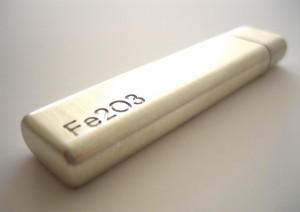ANAT, in partnership with Arts Victoria’s Arts Innovation program delivered three AIR residencies for artists within science/research settings.
Arts Victoria’s Arts Innovation program provided support for professional artists to undertake a project with partners in other fields to share their respective knowledge and expertise.
In 2007/2008 ANAT managed three residencies for Victorian professional artists or arts organisations to undertake Arts Innovation Residencies with the following host organisations:

Chris Henschke, Magnet & Fields (1)
Chris Henschke + the Australian Synchrotron
The Australian Synchrotron, opened in 2007, houses a 3GeV third-generation circular synchrotron that accelerates electrons to almost the speed of light. As the electrons are deflected through magnetic fields they create narrow beams of extremely bright light, which is channelled down beamlines to experimental workstations where it is used for research. Synchrotron light is advancing research and development in fields as diverse as the biosciences, medicine, the environmental sciences, agriculture, minerals exploration, engineering, forensics and the development of advance materials.
Chris Henschke is a Melbourne-based artist who has been working with digital media for the past fifteen years. His main areas of research are in experimental virtual environments and interactive sound installations. Chris focused his investigations on an incandescent lightbulb, given its symbolic and technological associations with the Synchrotron, using the facilitiy’s beamlines to analyse the lightbulb at different resolutions and methods, then combining the data to create a series of images, animations, sounds and sculptural forms.

Leah Heiss_Carrying Wellness Vessel
Leah Heiss + Nanotechnology Victoria (NanoVic) Ltd
Nanotechnology Victoria is a venture between three universities – Monash University, Swinburne University of Technology and RMIT University – to pursue commercialisation of nanotechnologies for Australian industry. Its major research programs consist of product development activities for biotechnology, as well as materials, manufacturing and environmental activities.
Leah Heiss is a designer, artist and educator interested in the role of technology in mediating social relationships. She holds a Masters of Design from the Spatial Information Architecture Laboratory, RMIT University. During the residency, Leah developed technologies and pieces entitled diabetes + arsenic. Diabetes is a range of jewellery, which works in tandem with NanoVic’s transdermal patches that allow insulin to be administered through the skin, replacing syringes. Arsenic encompasses a series of vessels, which act to remove arsenic from water and are designed for people in transit in areas where arsenic is prevalent in well water (e.g. India, Bangladesh, United States).

Frances d'Ath_3
Frances d’Ath + the Centre for Astrophysics and Supercomputing (CAS), Swinburne University
Established in 1998, the CAS is one of the largest astronomy research groups in Australia. With over 40 staff and students, the Centre’s astronomers are involved in research ranging from studying the formation of planets, testing Einstein’s Theory of Relativity, designing the next generation of radio telescopes, and mapping the large-scale structure of the Universe.
Frances d’Ath graduated from the Victorian College of the Arts School of Dance in 2001 and has since choreographed works for stage and film in Australia, Taiwan and Europe. She has been awarded residencies in Guangzhou and Taiwan and scholarships for study in both Vienna and Zurich. Frances used the residency to research and develop new choreographic systems derived from computer-based data visualisation and applied the research to interactive lighting and projection systems. The residency culminated in the presentation of a work in development – “monadologie”.
Tags: art science collaborations, Arts Innovation Residencies, critical interaction design, data visualisation, nanotechnologies, nteractive lighting and projection systems, Synchrotron Beamlight




